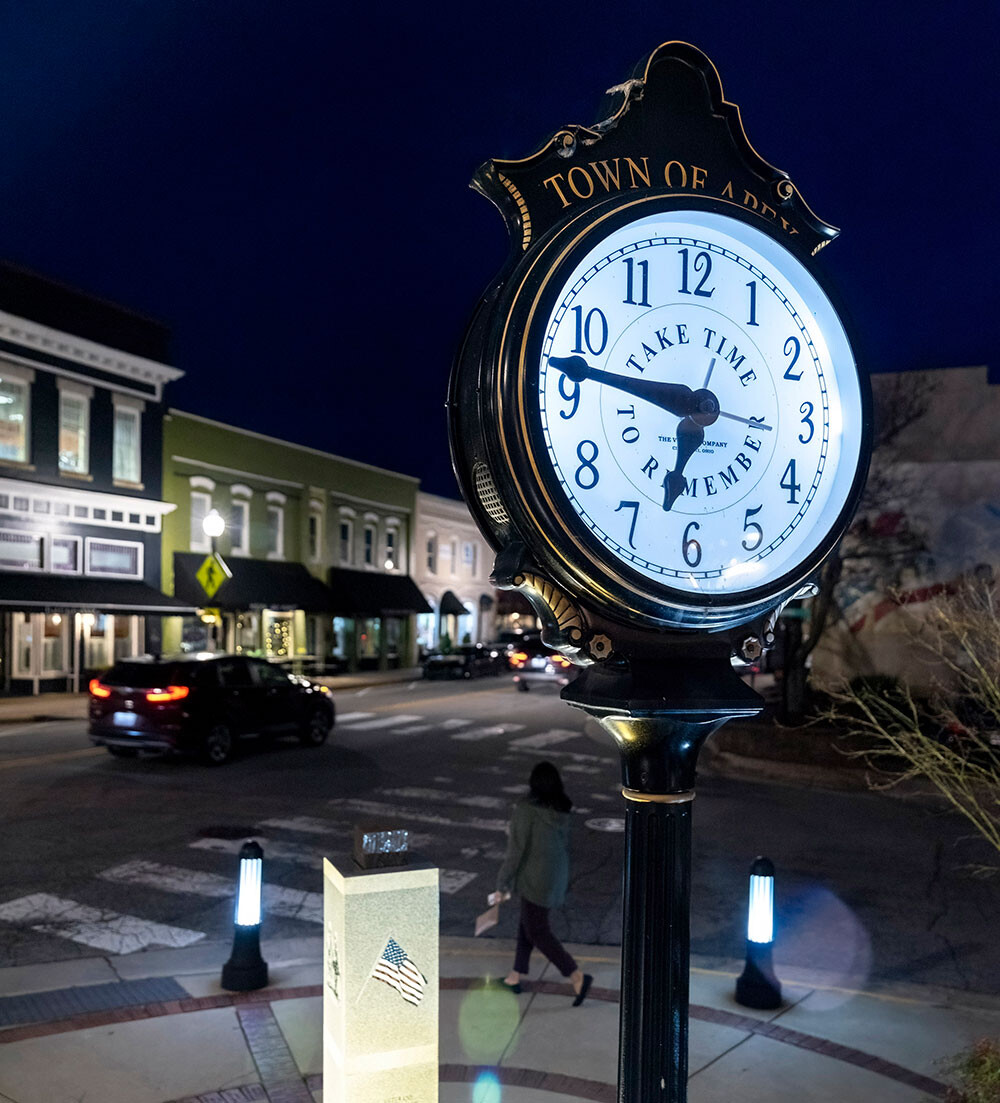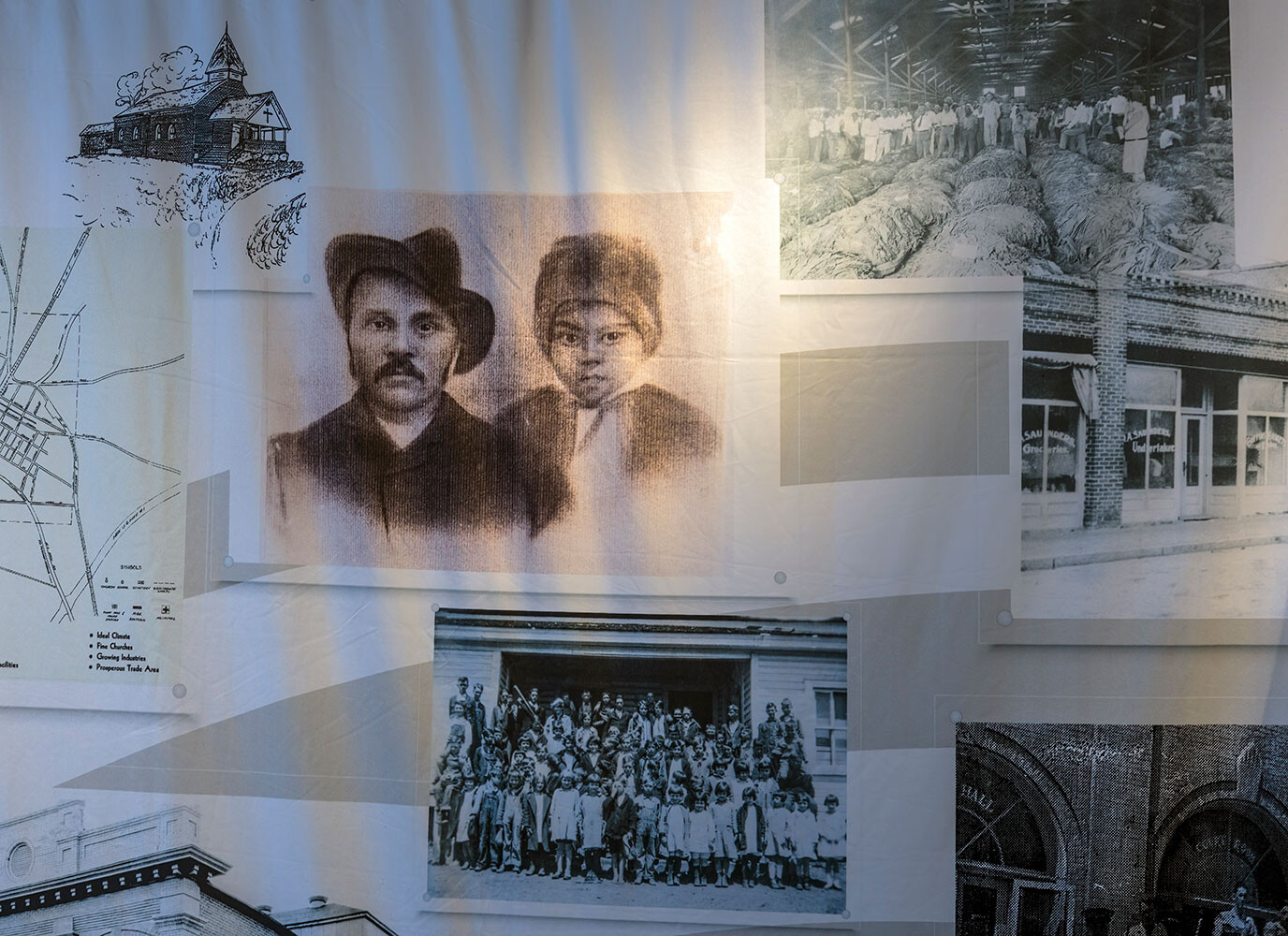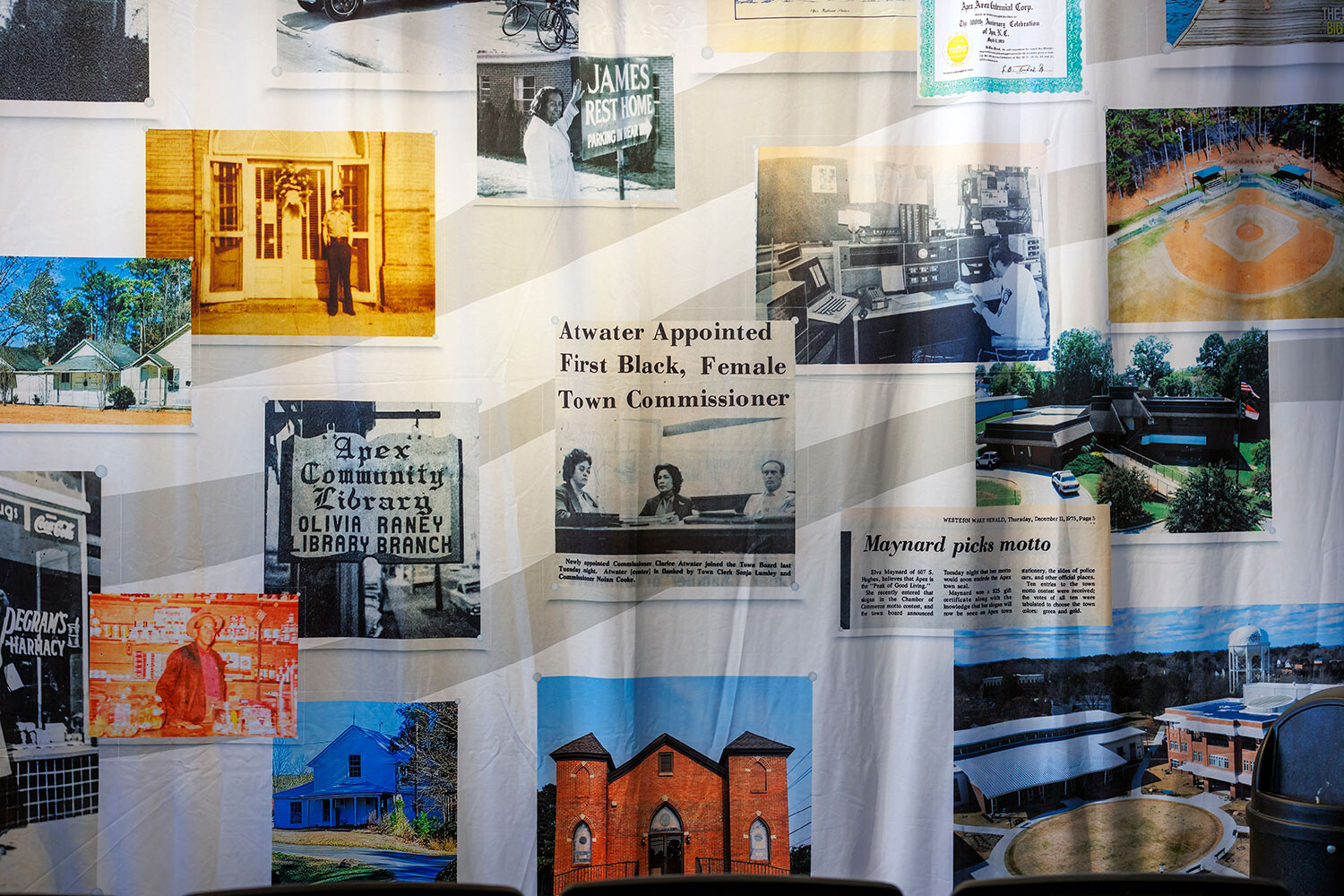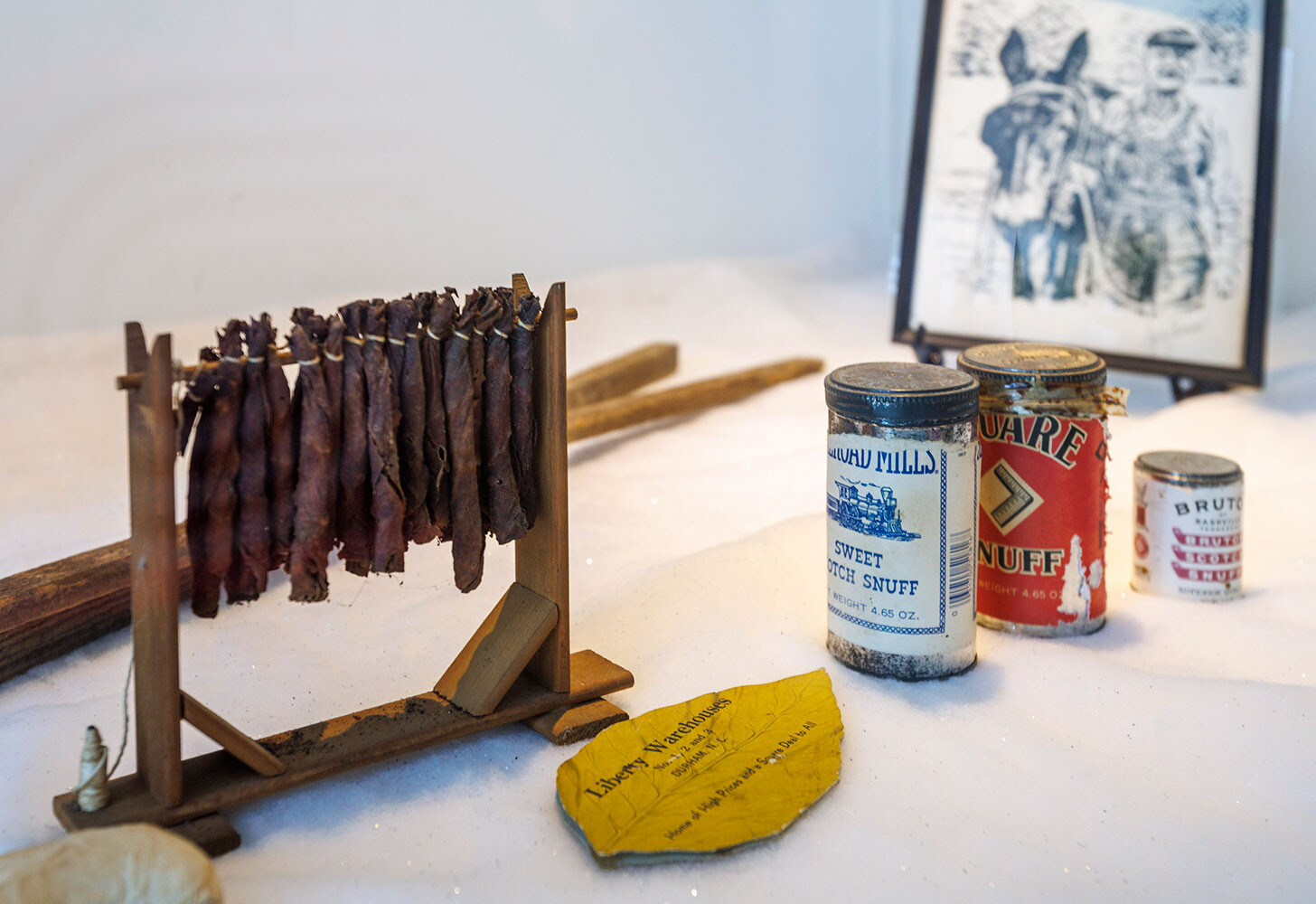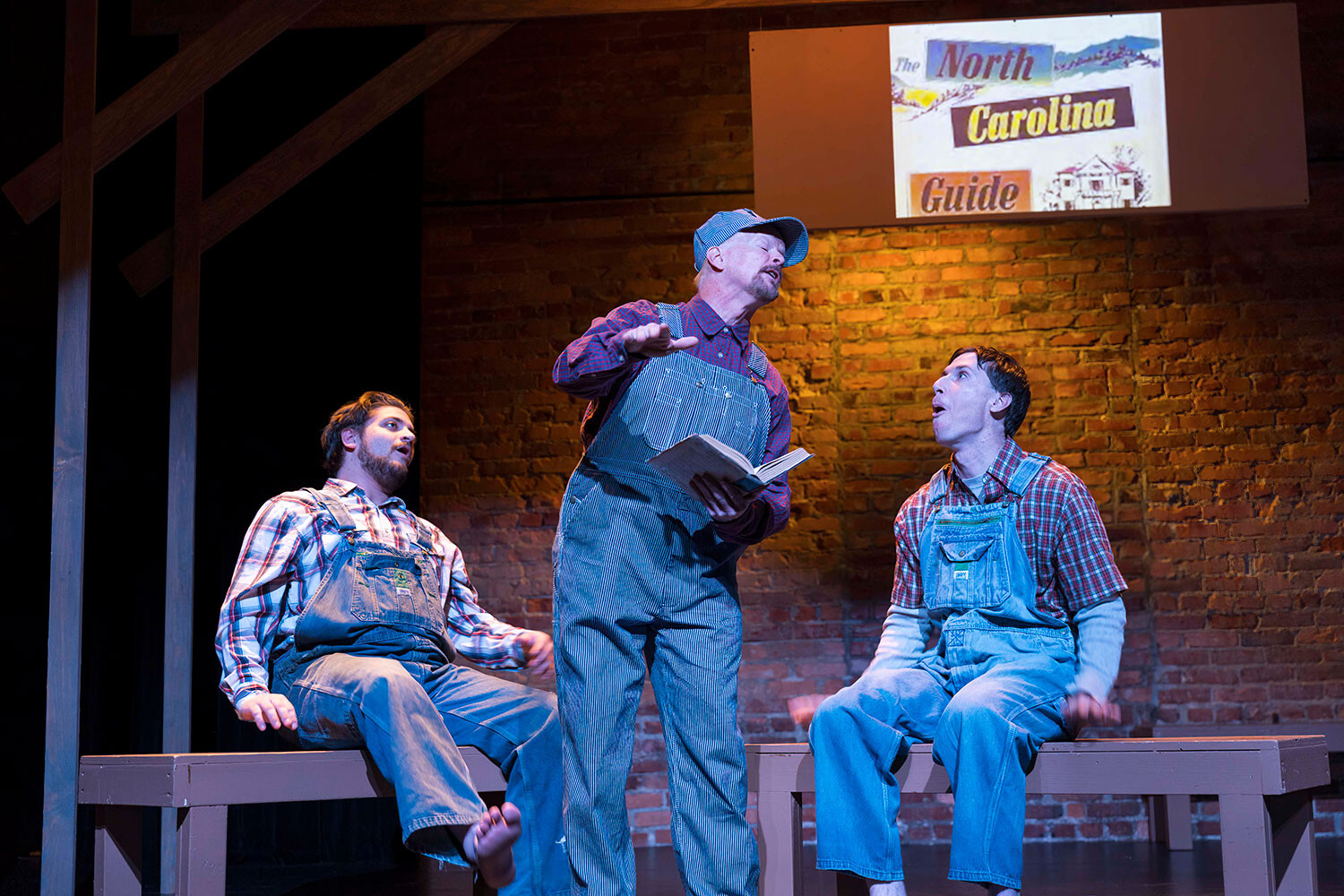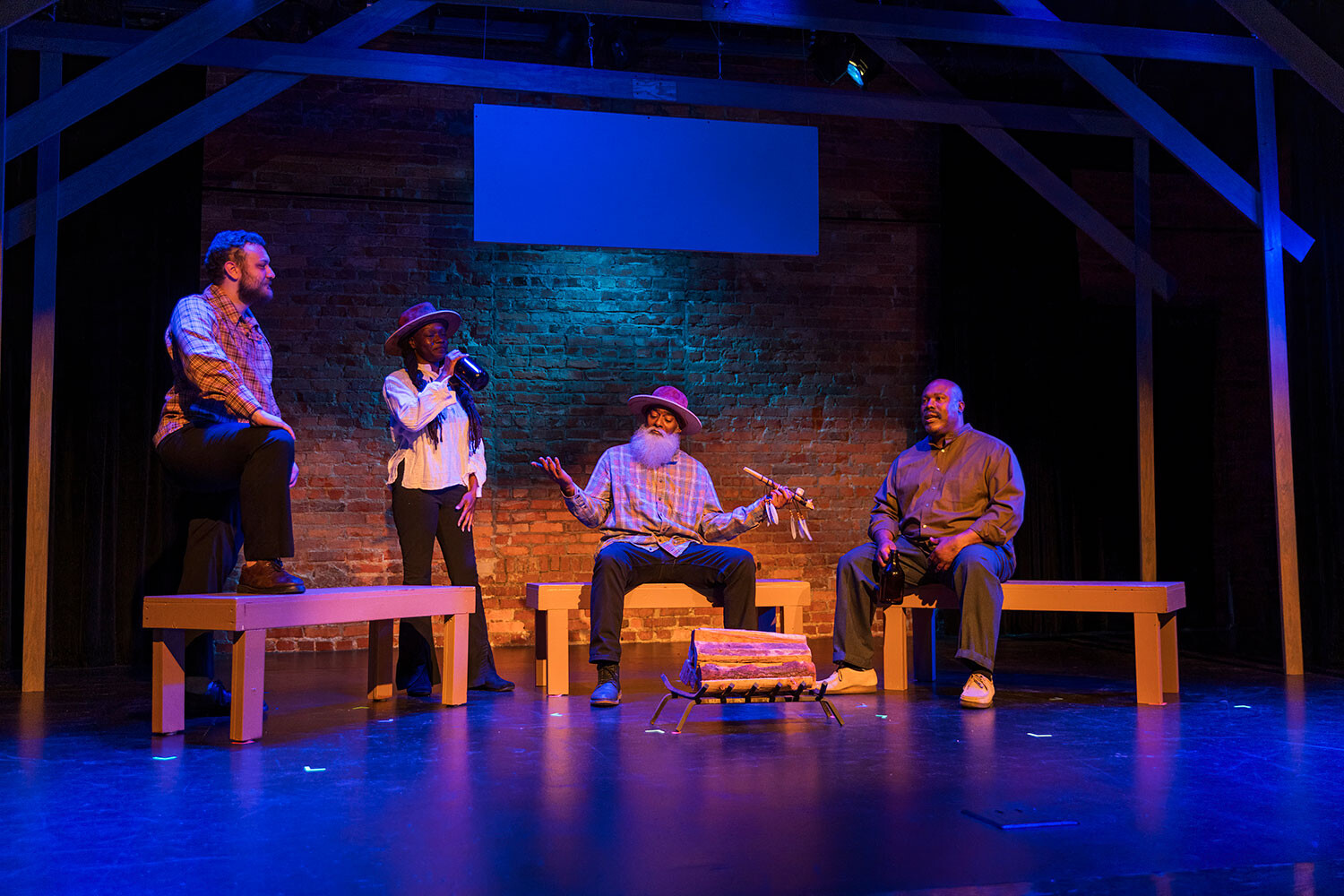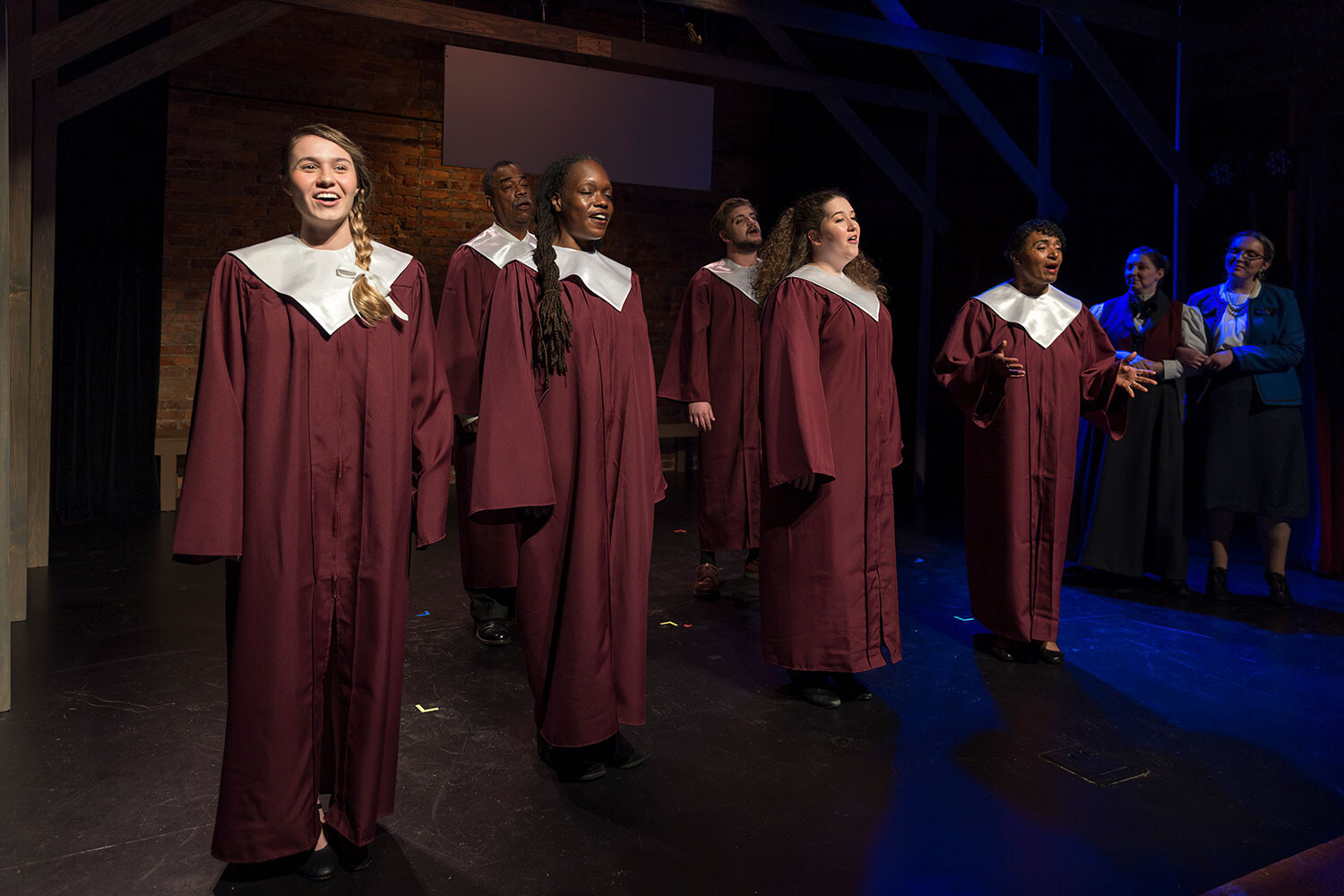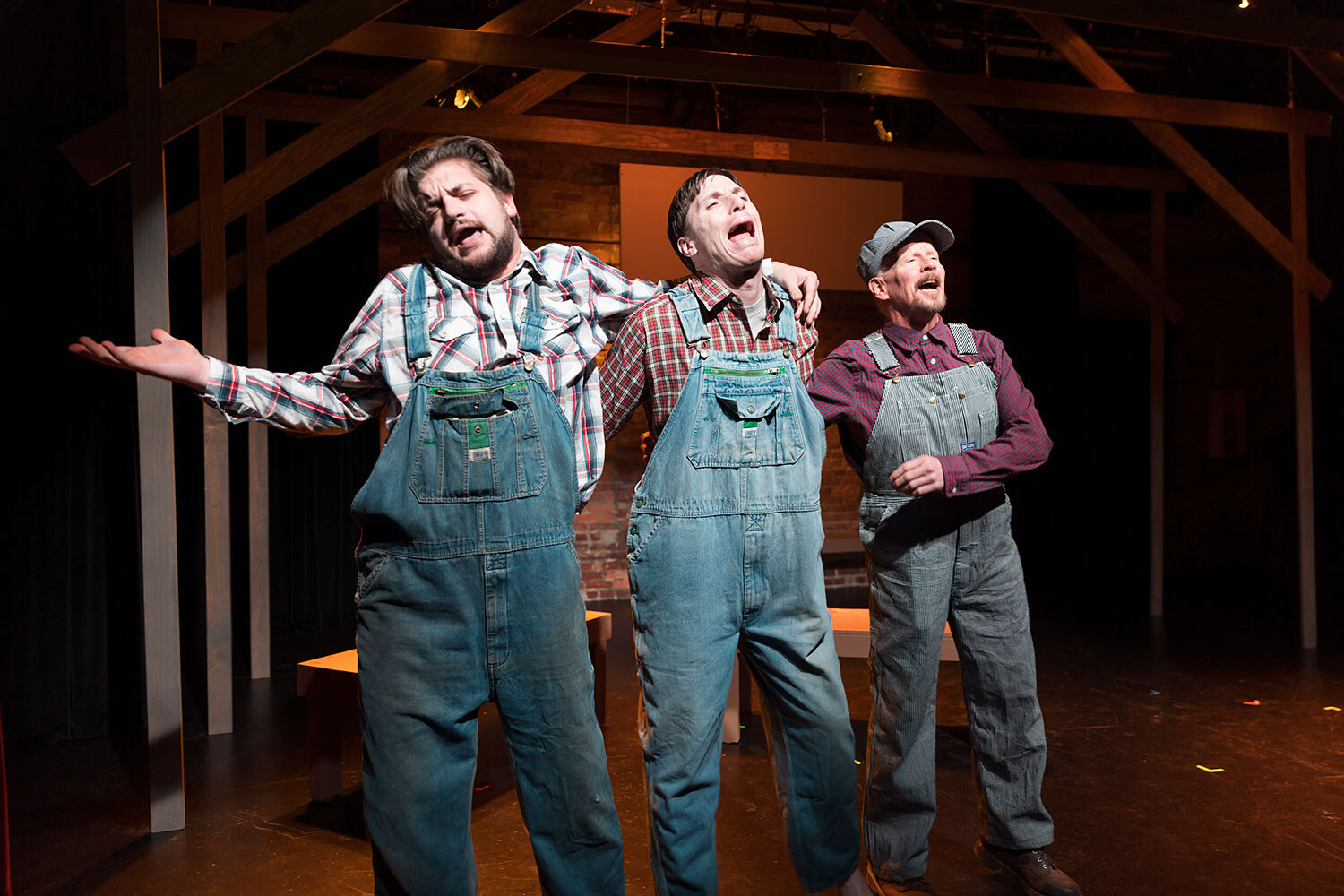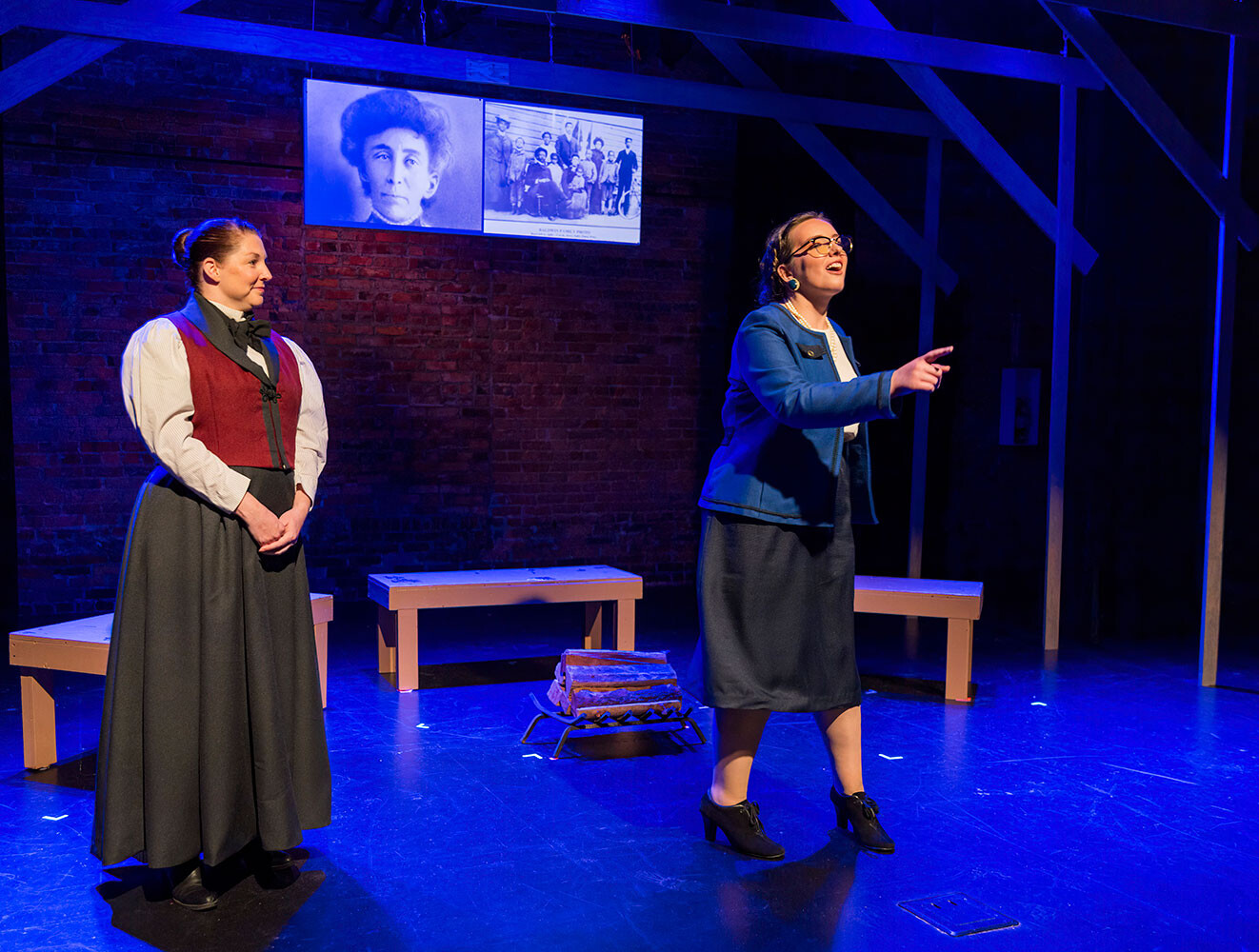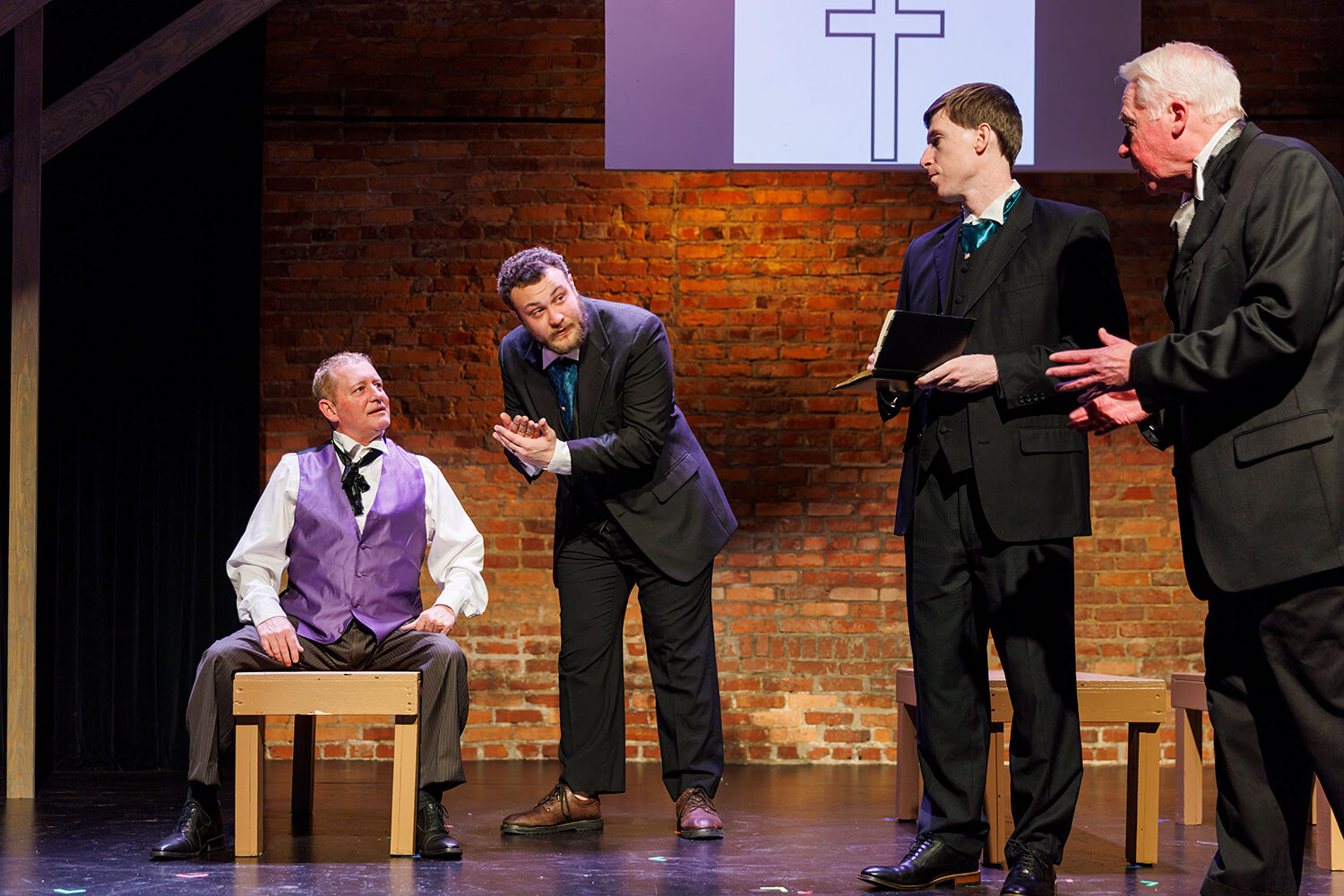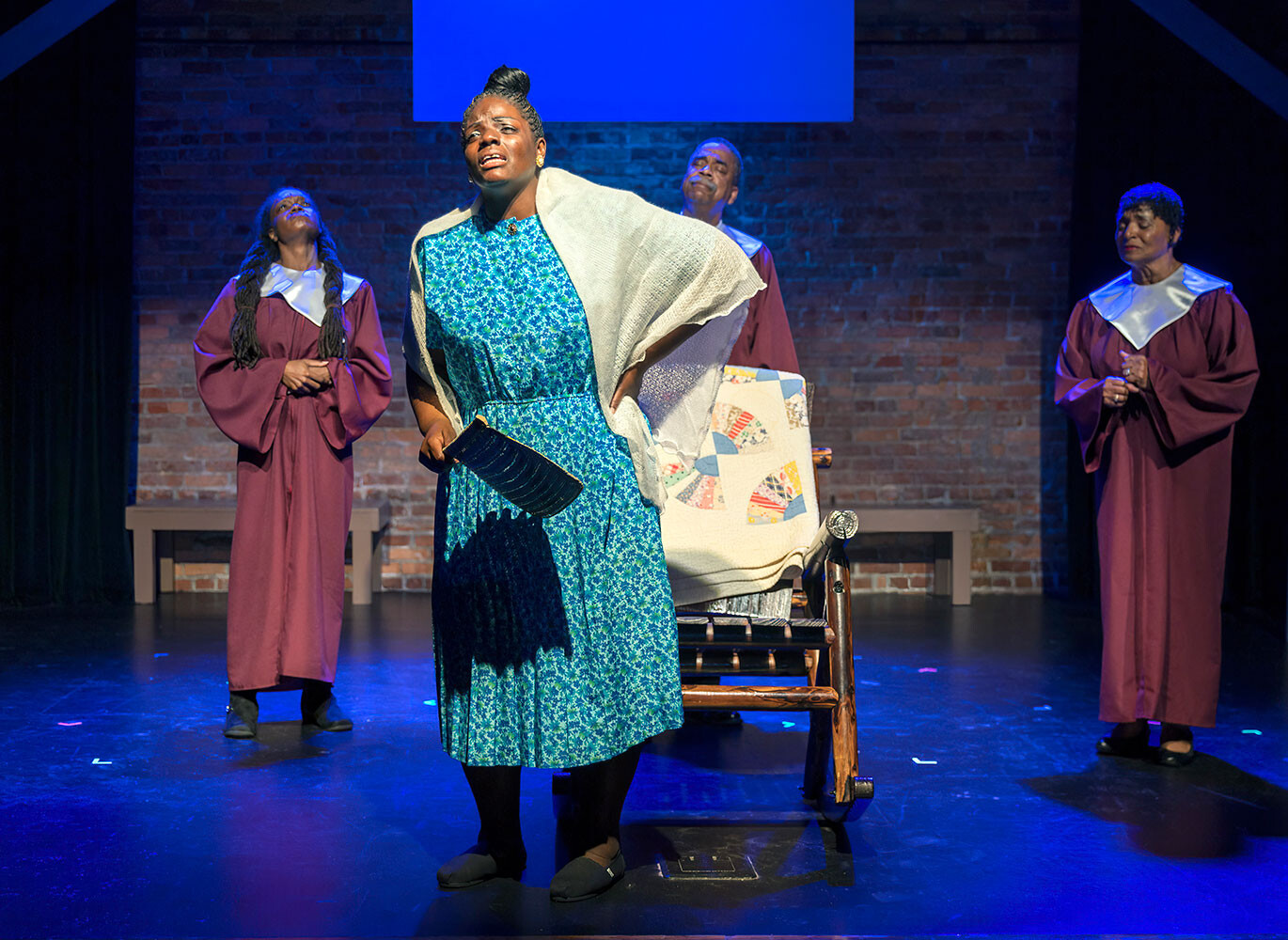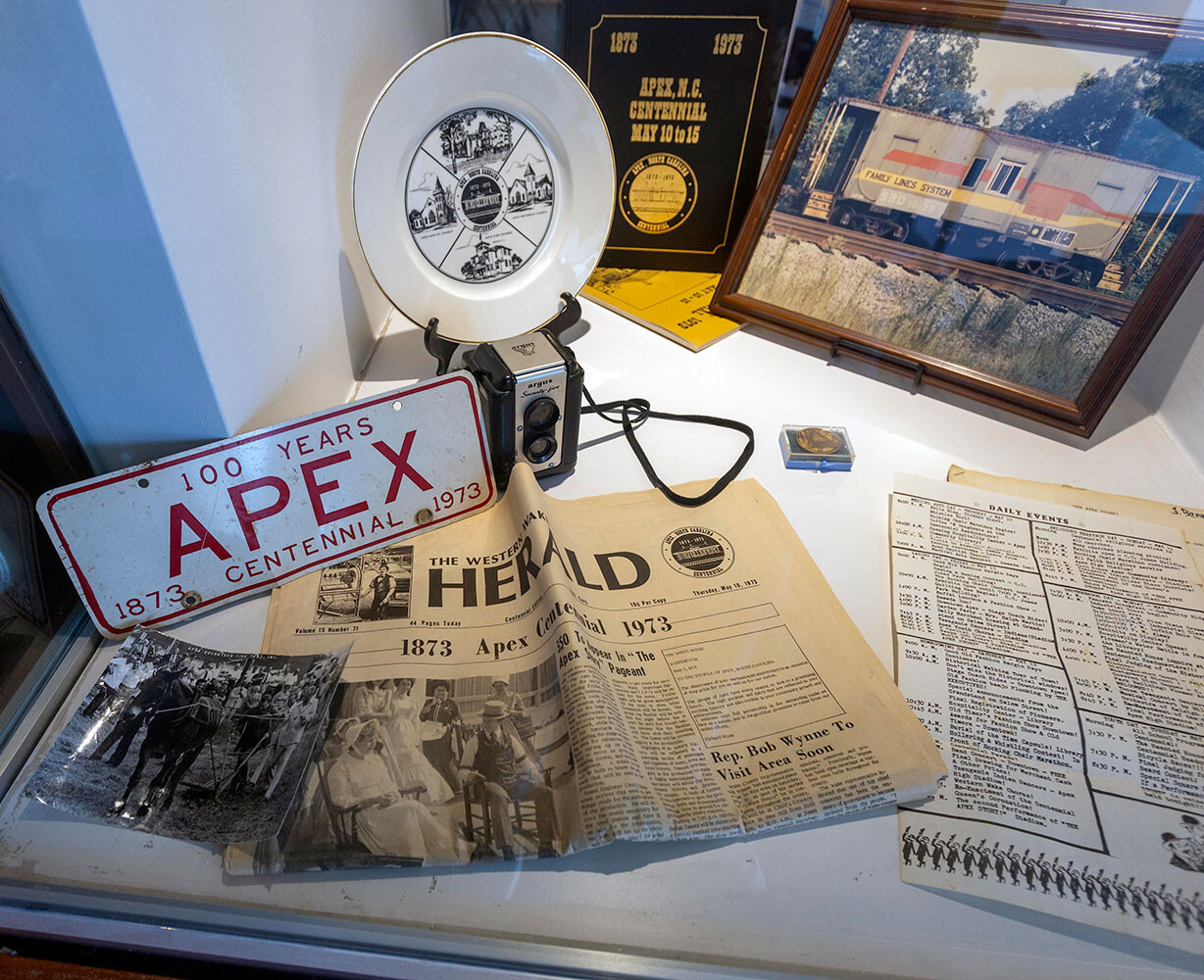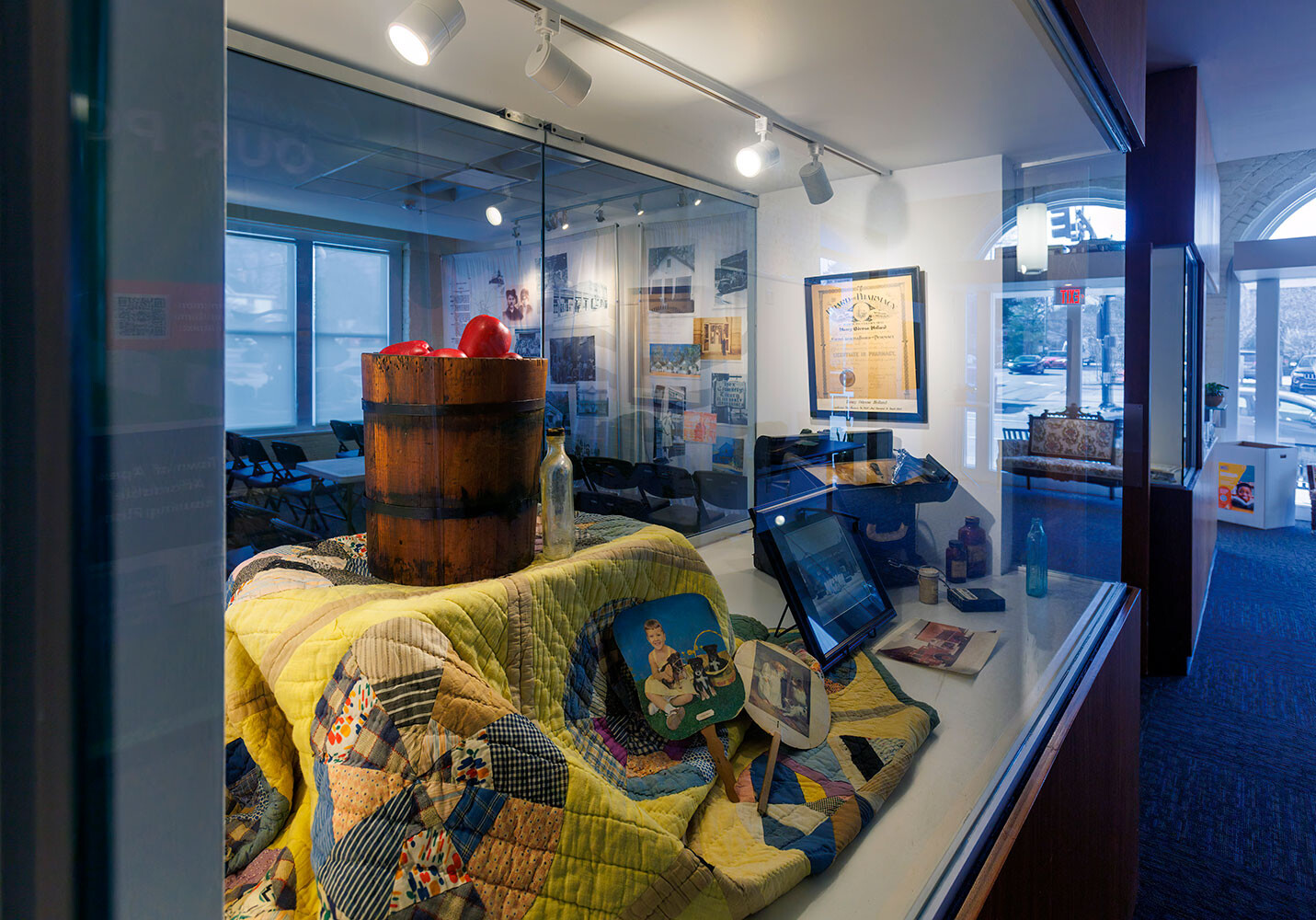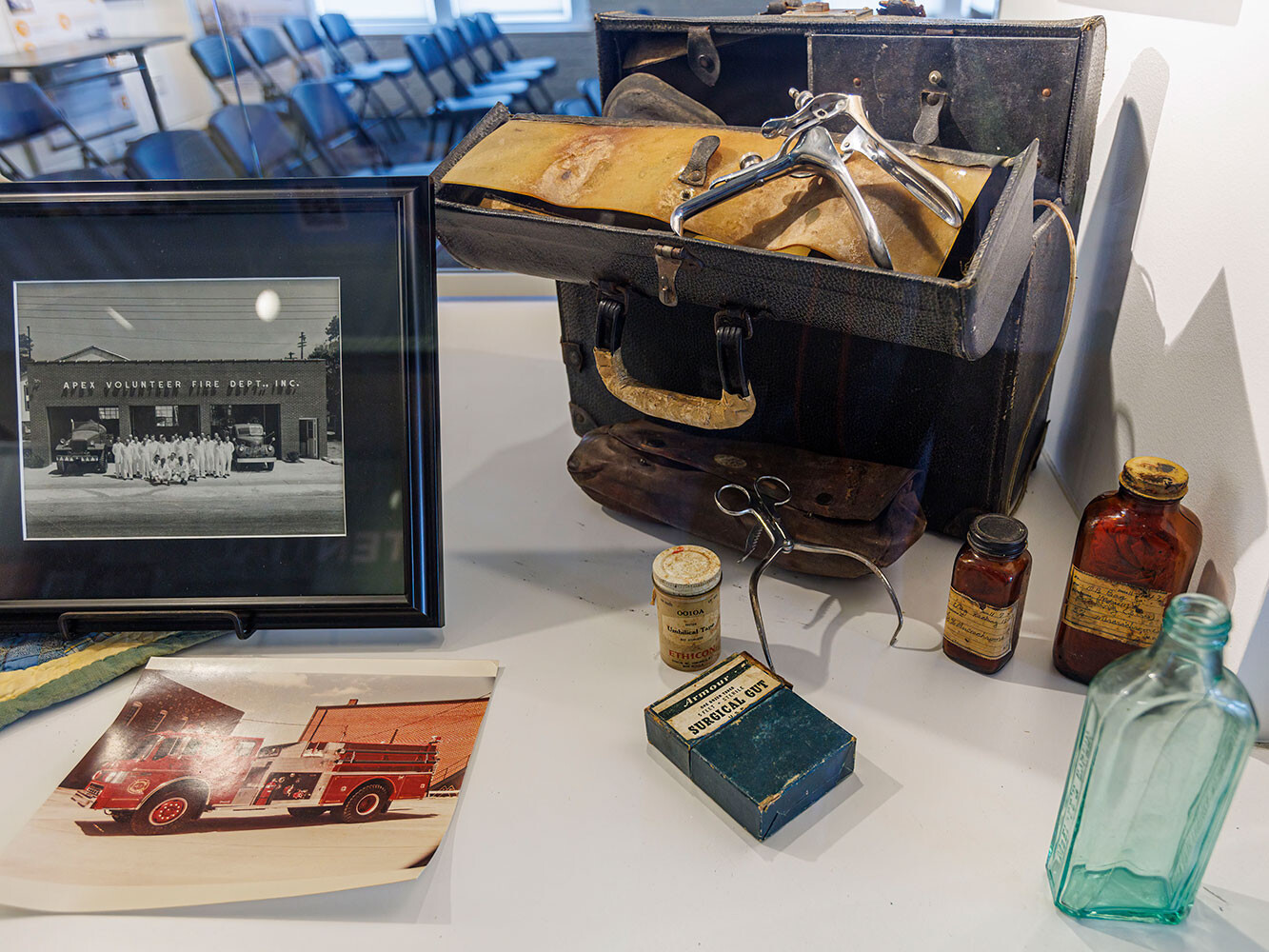As of 2023, Apex has cemented it status as a boomtown, making headlines for its explosive growth and achieving star power as one of America’s best places to live.
The latest economic crown jewel is Veridea, a $3 billion mixed-use development containing over 1,000 homes and a large campus for business and education.
In the middle of the excitement for the future, the community has spent the last year celebrating the town’s sesquicentennial and reflecting on the Apex of 1873, which was a much different place to live and work than it is today.
That year, the North Carolina General Assembly incorporated the Town of Apex, then a small farm-to-market community, on the southwestern end of Wake County. On May 5, 1873, H.C. Olive was elected to serve as Apex’s first mayor.
On a recent damp late-winter evening, the Halle Cultural Arts Center in downtown Apex was a hub of history, with displays lining its hallways and first-floor meeting room for a reception — one of the final events in the yearlong celebration.
Longtime residents mingled with newcomers and gathered to swap stories and reflect on a place that is still part of small-town America in their hearts.
“Our celebration was based on the simple concept of building understanding, creating unity, and challenging our community to go all in with Apex,” said Kerrin Cox, communications coordinator with the Town of Apex and the staff leader for the celebration.
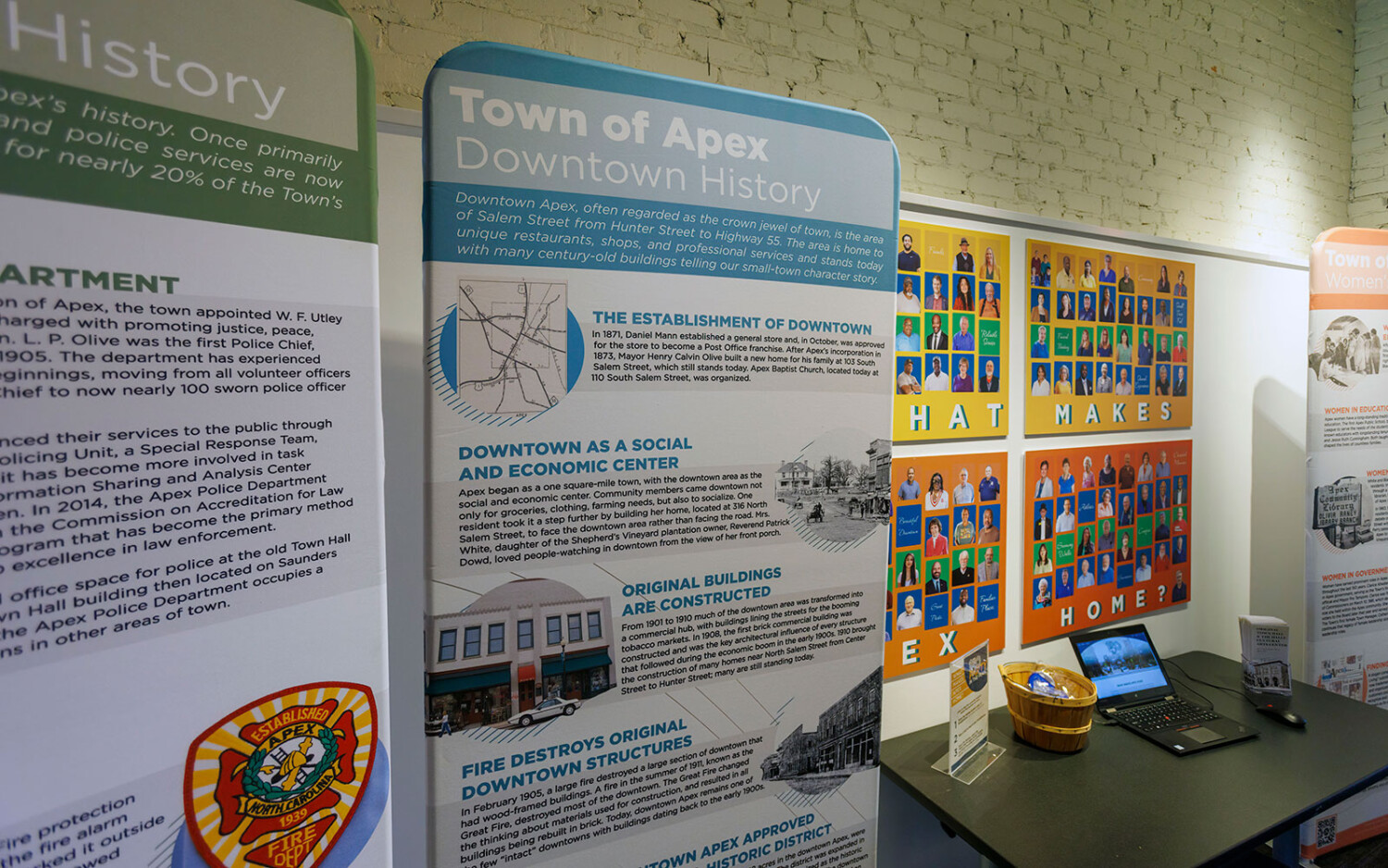
During the year, 170 volunteers working behind the scenes planned events and activities to showcase the town.
“The celebration included opportunities to get to know the community by being good neighbors, participating in tours and events, and enjoying our parks and greenways,” Cox said. “We thought hosting activities would be a good way for people to feel more connected.”
The town also created a booklet called The Passport to the Peak. Residents received stickers for their completed activities and traded their passports for commemorative gifts.
The largest event in the year of festivities was a massive street festival last September. Hurricane Ophelia paid a visit the same weekend and drenched the event but did not dampen spirits, Cox said.
An oral history project called What Makes Apex Home features videos of 117 community members describing their love of the town.
“Apex means something unique to every single person who lives here, and we wanted that unique love to unify us, bring us together, and make us all proud to call this place home,” Cox said.
The town also created a series of banners describing different aspects of Apex’s history, from the Tuscarora populations and African American communities to the roles churches and schools played in shaping the town of yesterday, today, and tomorrow.
The videos, banners, and other artifacts and materials will live on long after the celebration ends. The Apex 150 website and the Halle Cultural Arts Center will continue to display them, Cox said.
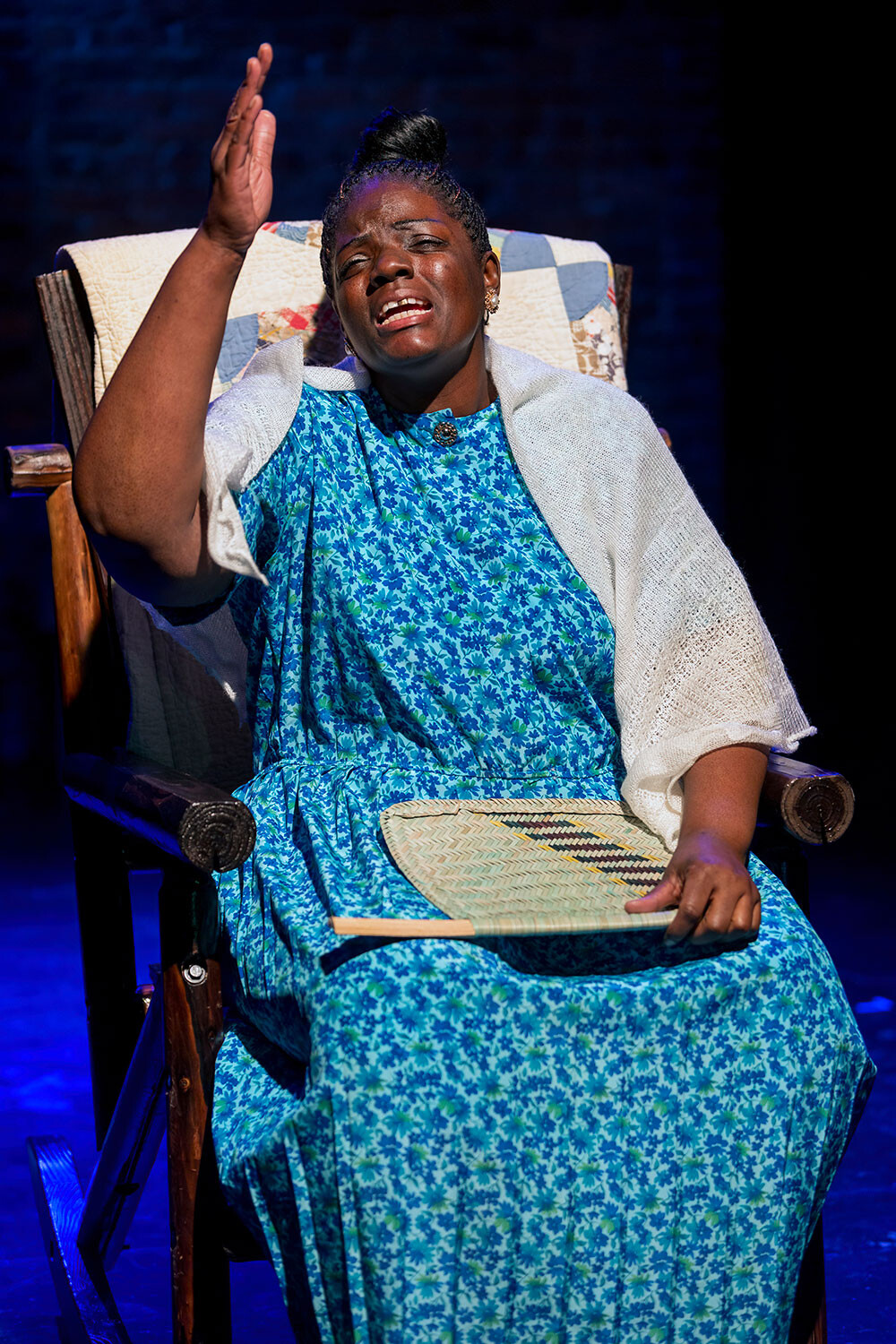
Actor Belinda Arhagba gives a moving performance in depicting the slave life story of Rena Raines, who was born 2 miles from Apex.
Apex officially closed out its observance with a commemorative play titled Forged in Fire, by writer and Apex native Warren Holleman.
Holleman, who now lives in Houston, recalled the Apex of his youth, when the town encompassed one square mile and the population was less than 2,000. He graduated from Apex High School in 1973 with 98 of his classmates.
“I am thrilled that the town is marking this anniversary and putting such an emphasis on honoring the past,” he said.
Forged in Fire tells the story of Apex through the eyes of two leading ladies: Mary Baldwin, who built schools and churches in town and whose sons built a Black Wall Street in Martinsville, Virginia; and Julia Montgomery Street, who became a beloved children’s book author.
The play is based on Warren and Toby Holleman’s award-winning book, Pluck, Perseverance, and Paint: Apex, North Carolina Beginnings to 1941.
The Holleman brothers’ lives intersected with history when they were young men.
They recalled the day their father, who was the Apex town attorney, approached Toby and asked him to write the history of Apex for the town’s centennial in 1973.
“That year, I was a junior in college, and my father had come to me during the summer of 1972 and asked me to write a book on the history of Apex,” Toby Holleman said. “Dad helped me line up interviews with local townspeople, and that’s just what I did, along with Warren and Mama, and we wrote a book for the event.”
For the 150th Anniversary, the brothers updated the 1973 book and published its second edition last year.
At the February reception, Ashlee Taylor Layton enjoyed the exhibits and reception with her family. They had moved to Apex from Durham seeking a place with a small-town vibe. She has attended the street festivals, become acquainted with local government, and learned about the inner workings of the town.
“When I come to events like this, I actually recognize members of the town council and the mayor and the police chief,” she said. “I can’t believe I’ve lived here only two years because it feels like I’ve lived here forever.”
Mayor Jacques Gilbert is a lifelong resident of Apex and was elected the town’s first Black mayor in 2019. He was re-elected to his second term during the sesquicentennial year.
“The pace was a lot slower then, and despite the growth, I don’t think we’ve lost our small-town feel,” he said. “People still care for each other and look out for each other like in the early days.”
Today, Apex is home to more than 75,000 people and growing. The Apex Economic Development Commission estimates that more than 120,000 people will live in Apex by 2030.
Gilbert hopes that despite the changes coming, the town will continue building on the small-town values its founding fathers built when Apex was first chartered.
“We are making rapid changes, and for some it may be too fast,” he said. “My goal is to make people in the community feel a part of things, and I believe we’re moving in a positive direction.”
- 2024 Maggy Awards: Shopping
- 2024 Maggy Awards: Services
- 2024 Maggy Awards: Lifestyle
- 2024 Maggy Awards: Restaurants
- The 2024 Maggy Awards: Western Wake’s Most Wanted
- Garden Adventurer: The Edible Oddity: Patty Pan Squash
- Liquid Assets: Kiwis Fly North
- Liquid Assets: Reifenberg
- Restaurant Profile: SAAP Laotian Restaurant
- Nonprofit Spotlight: True ABAlities Preparatory School (TAPS)
- Boomtown: Apex Turns 150
- Erica Chats: Feeling Stuck?
- On Trend: Modern Caricatures
- Small Business Spotlight: Cary Dance Productions
- Pursuing Greatness
- Things to Do: April 2024




